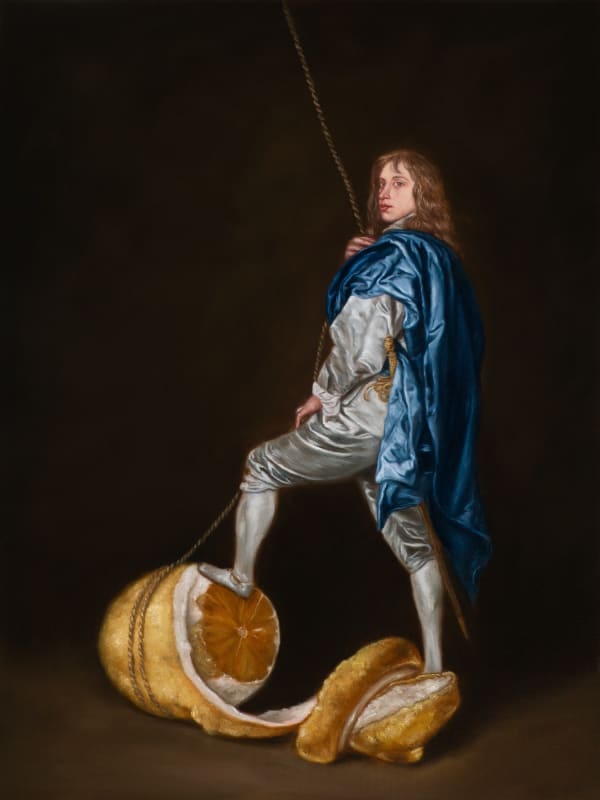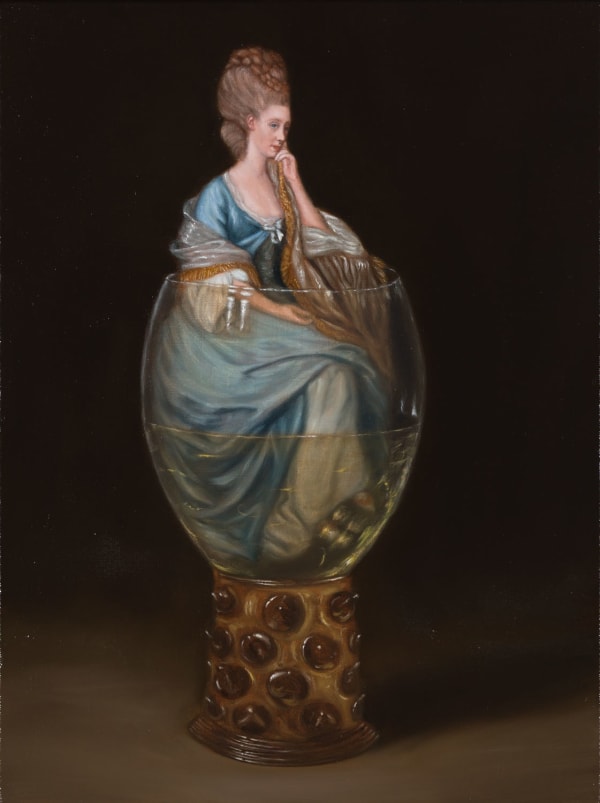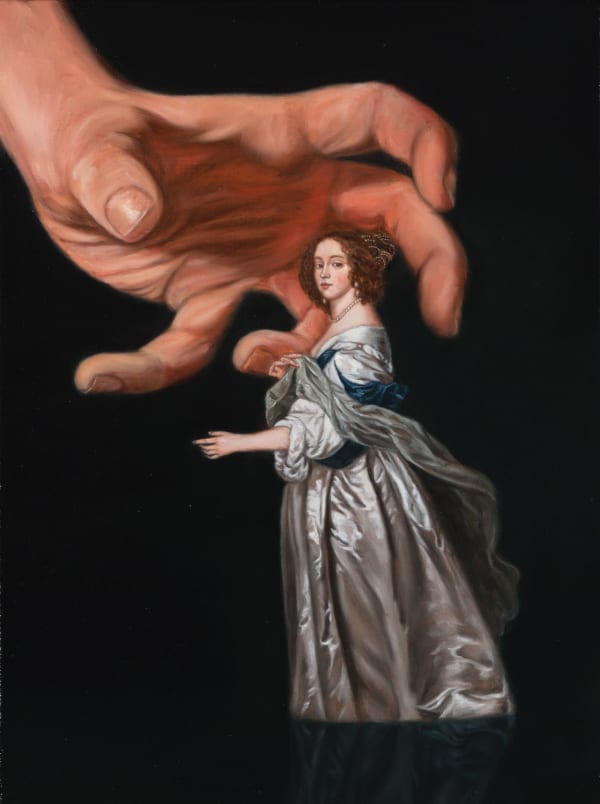Rory Macdonald’s intensely focused, exquisitely detailed paintings are a constant source of delight and discovery, where the imagination is free to roam. In his latest work, Rory explores power dynamics, composition and perception.
-
Three Questions for Rory MacDonald
Playing with titles, scale, and elevation of the secular to the sacred are intriguing elements explored in your work. These shifts of perception bring new life to the Western tradition of painting in a contemporary context. How does playing with this language bring fresh perspectives in the studio?
RMD: When I studied art history at university, I was drawn to the beauty and craft of renaissance and baroque art, yet ultimately felt disconnected with it. This led me to write about contemporary art in most of my studies, as I felt I had more to say on the topic. When I came to paint myself I found a new appreciation for the traditional mode of painting through a study of the craft. It is through changes of scale, context, theme and so on, that has enabled me to connect with the visual language I use on a deeper level. I want my paintings to speak to a contemporary viewer and I hope that my work translates both the excitement of the craft and contemporary content to them.
You’ve spoken about wanting your work ‘to be well crafted and playful, a blend of those two things,’ and the importance of ‘what the paintings are, rather than how they are done,’ that ‘the feeling is paramount.’ Can you tell us a bit more about the meticulous energy and empathy at the heart of your practice and how this shapes your approach to the figure or portrait?
RMD: I think that this is something that is largely subconscious, the way you feel towards the figure being portrayed is imbued into the resulting painting, but its not something you can actively look to put into your work. I feel you have to be open and empathetic, and whilst you work there is something of a connection formed with the portrait. Following my feelings within paintings also applies to my subject in general. What I choose to paint has to be something I want to paint. It might sound simple, but I think it can be easy to fall into the trap of painting for your audience and not yourself. For me this weakens the work. It is paramount that I follow what I feel, paint what I enjoy and therefore connect with the painting or portrait on a deeper level.
The lone protagonist has a psychological edge in your work, and you capture highly nuanced human expressions, as in Blue Valentine, The Bitter End, or Mirage where the half-submerged figure directly meets the viewer’s gaze. I’m also struck by the dichotomy of Chosen One and Safe Passage in this body of work, in terms of power, gender and the history of Art. What was the process or dialogue with these figures like and what questions did they raise for you?
RMD: For me, I felt that both The Bitter End and The Butcher operate within the same conceptual space; the subversion of masculine feats of strength and brutality. I do not want to simply make a mockery of these figures, it is more raise a question and probe our visual understanding of power. The same can be said of Chosen One and Safe Passage, it is an exploration of power and its perception. The level of threat, or by contrast, protection, is left for the viewer to decide. In fact, I have already heard contrasting interpretations from friends who looked at this particular pair of paintings, some seeing threat in Safe Passage and safety in Chosen One, and the antithesis from others. I wanted to examine the role of gender in these power dynamics, and explore how body language and composition can lead our subjective understandings.
-






